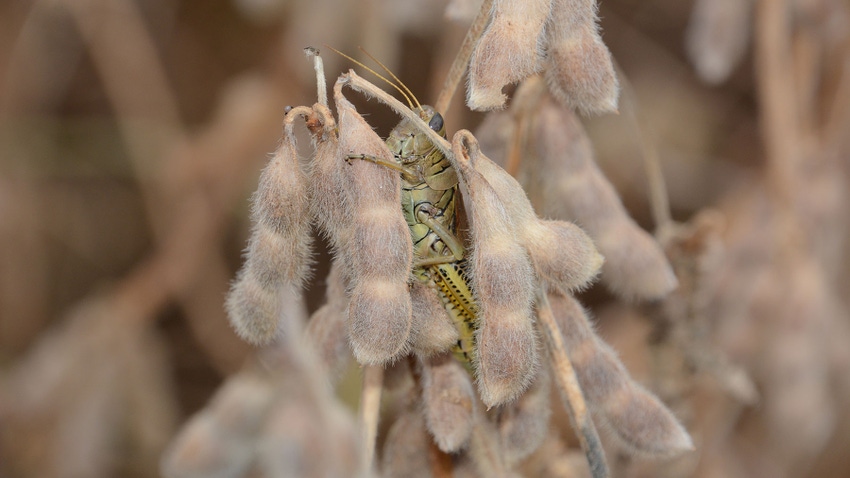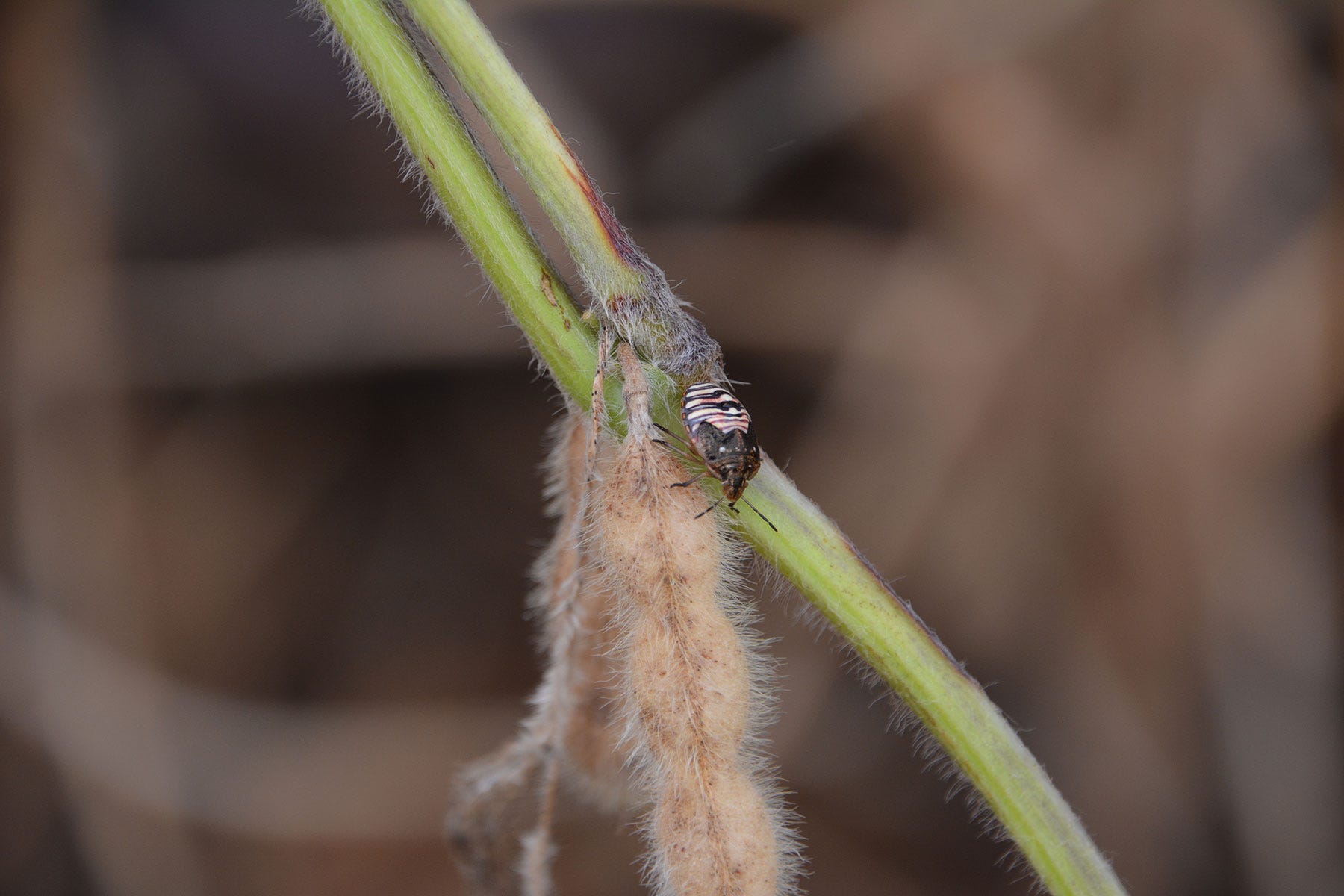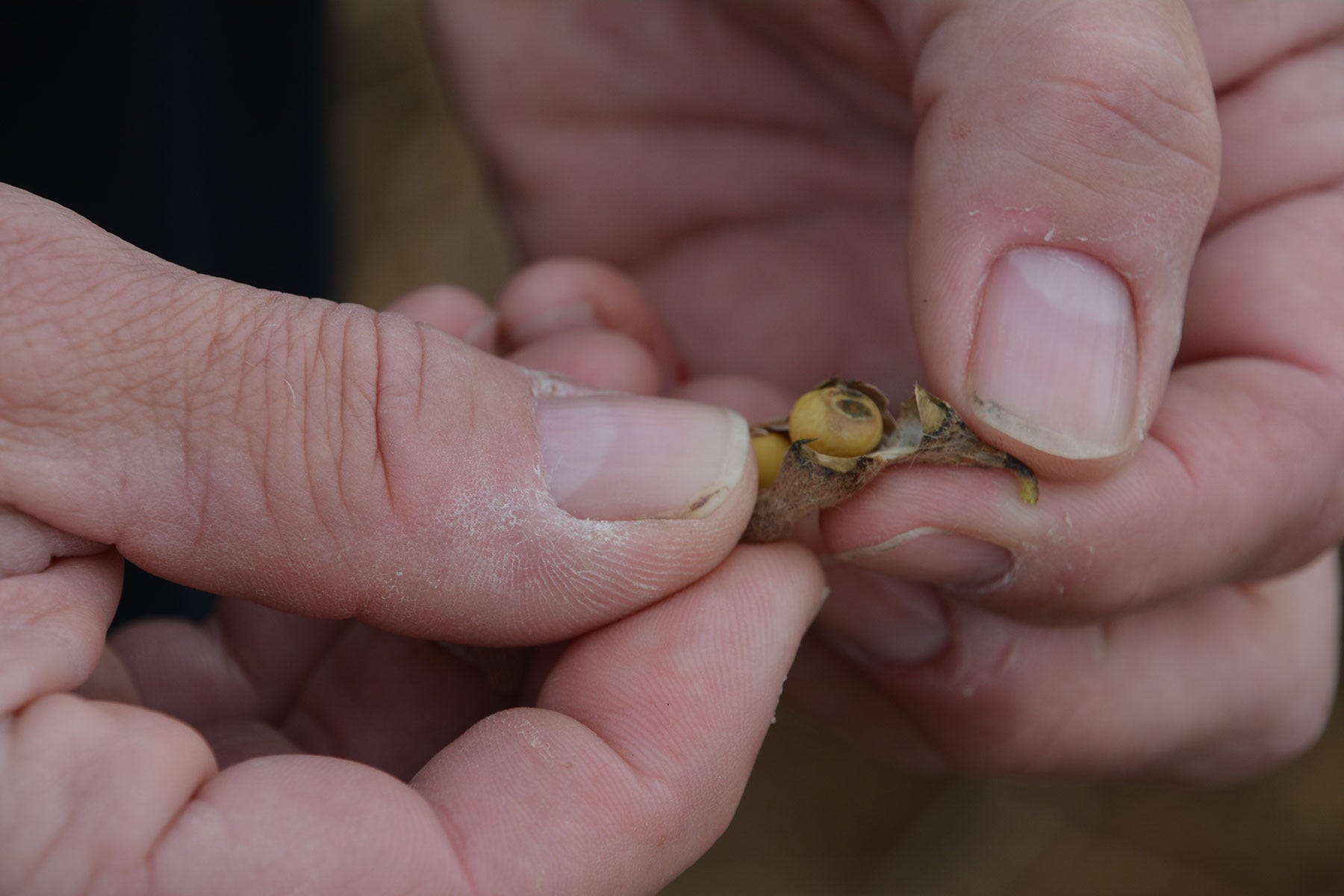
So, you think your soybean fields were insect-free. Did you look? They might not have been as devoid of insect activity as you think.
“There is a difference between having enough insects to justify treatment and finding a few insects in the field,” says Steve Gauck, a regional manager for Beck’s, sponsor of Soybean Watch ’23. “We scouted the Soybean Watch field several times, and we never found many insects at any one time. However, we found insects on every visit, even right before harvest.
“If you’ve got soybeans, you’ve most likely got insects. Grasshoppers and stinkbugs are most common, and we saw them in most fields this year — especially grasshoppers. If they’re feeding on green leaves, they probably aren’t impacting yield unless they’re present in large numbers. It takes a large amount of defoliation to threaten yields and justify treatment.”
Harvest concerns
Stinkbugs can be a different story, Gauck says. Green stinkbugs are most common in soybean fields, although you may find a few brown marmorated stinkbugs as well. These insects are a concern even as harvest nears because they can feed on pods.

STINKBUG PRESENCE: Steve Gauck spotted a stinkbug here and there in the Soybean Watch ’23 field as well. Numbers were well below treatment threshold, but some were present and feeding.
“A stinkbug has a piercing mouthpart and can sink it into individual beans inside pods,” Gauck explains. “That bean is usually severely damaged. However, that’s not the only reason for concern. Once they penetrate a pod, it’s opened to invasion by other pathogens. That can mean damage to all beans inside the pod. In years with lots of stinkbug activity late, you often hear reports of soybean quality issues.”
This was not a year of high stinkbug activity, Gauck acknowledges. Still, he found pods damaged by stinkbug feeding, even in the Soybean Watch ’23 field. This field was not sprayed with fungicide or insecticide.

INSECT DAMAGE: This bean was likely stung by a stinkbug inside the pod. Note discoloration on the bean. Once the pod is penetrated, secondary pathogens can move in, setting the stage for infection.
“You would expect less insect activity if an insecticide was applied, although it depends on how well the insecticide worked and when it was applied,” Gauck says. “There are people who recommend applying an insecticide as insurance against major insect outbreaks, and then there are people who argue that you should only apply them if an outbreak occurs to practice good stewardship toward the environment and preventing insect resistance.”
Adding insecticide midseason is relatively cheap, he notes. Without a large insect infestation, payoff in terms of more yield may be minimal. It boils down to an individual decision based upon philosophy and risk, Gauck concludes.
Read more about:
Stink BugsAbout the Author(s)
You May Also Like




